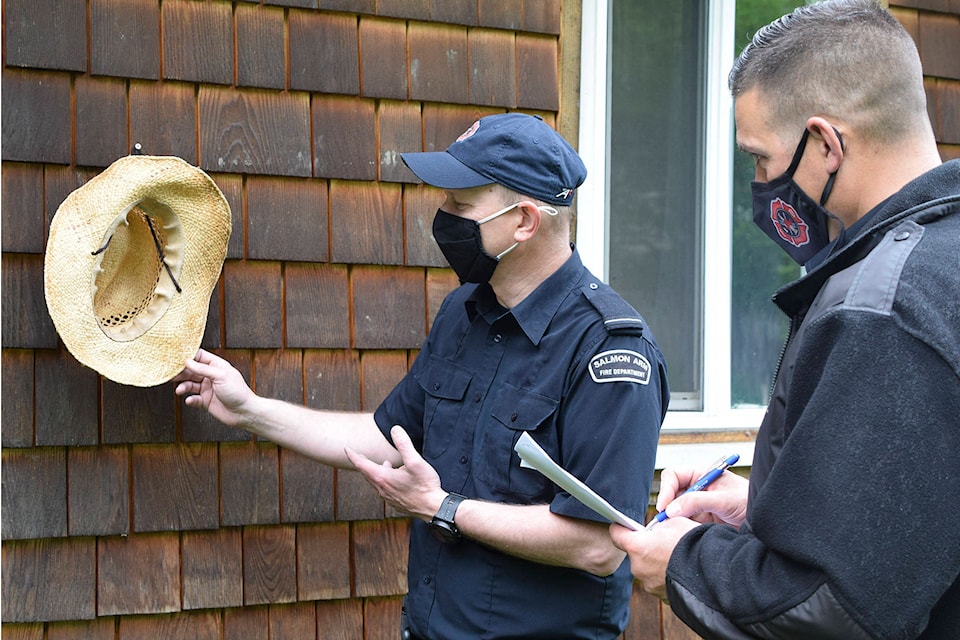Hmmm. Not too bad, I thought, taking a quick look as Salmon Arm firefighter Steve St. Denis showed me the first page of the FireSmart assessment for my home.
Seventy-eight. That’s a pretty good score. In the ‘B’ range.
My fireproof bubble soon burst, though, when I realized that the lower the number, the better the score, with zero being perfect.
In fact, anything higher than 35 garners a menacing, dark-red “Extreme Hazard” box.
Sorry neighbours, I’ll make amends.
To their credit, St. Denis and his co-inspector Carmen Guidos were very supportive and kind.
No judgments or criticisms.
Not once, for instance, did they mock the cedar shakes on the house, which, when I think of them in terms of an encroaching wildfire, seem a bit like an attempt to entice the flames over to the building by gift-wrapping it with kindling. Here bear, let me dip my tent in honey and blueberry syrup before you trundle by.
The firefighters kindly explained that, as far as the scoring goes, it’s tough as there are no part marks for categories. You either get zero (good) or 30 (sadly lacking…).
Read more: VIDEO: Burning hedge between Salmon Arm homes gives cause to FireSmart efforts
Read more: CSRD offering FireSmart assessments, developing community wildfire plans
They spent more than half an hour walking around the outside of the house with me, pointing out potential trouble spots and how to fix them.
They emphasized that one of the biggest hazards is embers, which can travel five miles from their source. What the firefighters don’t want to see on a house are spots where those embers can settle in and start a new fire.
Guidos chuckled when he saw my straw hat hanging from the wall of the house, dished-side out. A perfect little ember catcher and incubator, sure to give birth to a good crop of flames. He said it’s interesting how many of them he sees.
Another offender was a wooden birdhouse hanging from the house. Anything that is a potential conduit for a fire to attack the house itself has to go. It turned out the cedar shakes weren’t the biggest contributor to my failing grade. The lack of a 15-centimetre, non-combustible strip of material from the ground to the shakes was one of them.
One heartening piece of information I heard is that “fire is lazy, it goes where it’s easiest.”
Given that I have lots of incentive to not put FireSmarting my house on the back burner (with the element on), I plan to outwork that lazy fire and lower my FireSmart grade, especially now that I am fuelled with the information provided by our knowledgeable and non-judgmental firefighters.
Many thanks to them and to those behind the FireSmart program. My house and I are grateful. And my neighbours, I’m guessing.
If you’re interested in a FireSmart assessment, email firesmart@salmonarm.ca to request one.
